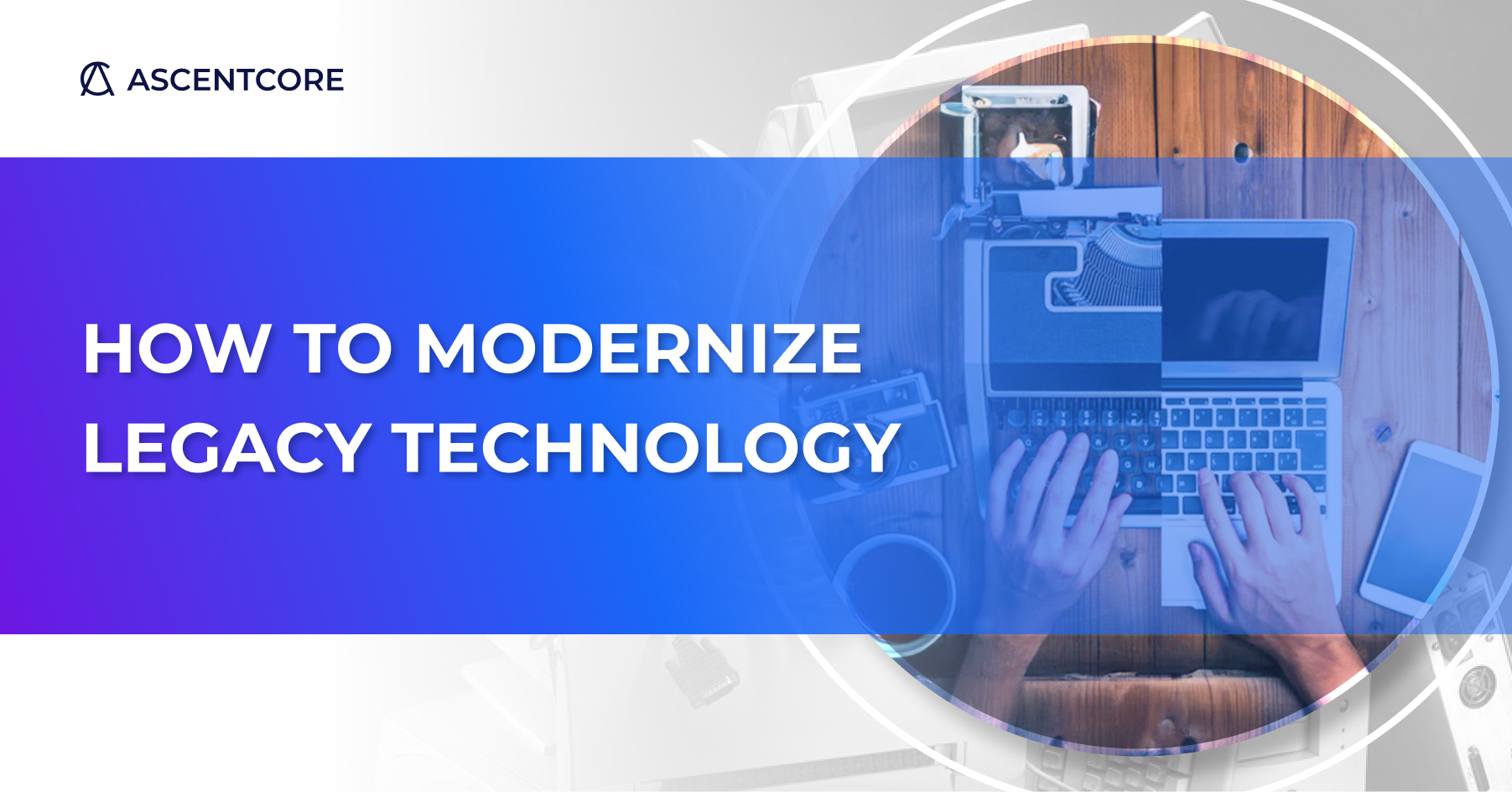When it comes to staying relevant and competitive, businesses cannot afford to take a “set it and forget it” approach to their processes and systems. That means it’s essential that enterprises prioritize their efforts to modernize legacy technology for efficient and agile operations. More importantly, if an enterprise has a digital transformation strategy in place (or is considering one), it’s critical to invest the time and resources in modernizing IT infrastructure to support that strategy.
So, let’s explore the key components of a modernization strategy to inspire your business’s efforts.
Let’s Start with the Basics
Before we dive into the elements of a modernization strategy, let’s take a 30,000-foot view first. What do we mean by modernizing legacy systems? This concept can be applied to IT, data, software, processes, and more. But overall, modernization is the process of updating or moving away from old solutions and legacy systems to more automated and innovative solutions.
A modernization process is the backbone of any digital transformation strategy as it allows an enterprise to achieve more agility, implement better processes, optimize customer experiences, and more. According to Deloitte, “if there’s one overarching driver of modernization, it’s the need for the flexibility and agility required to integrate IT technologies in a way that aligns with business demands.”Think of it this way: we no longer use a landline to access the internet, right? To get better, faster, and more reliable internet, we had to upgrade to ethernet and WiFi. And if you are still using a landline for the internet, odds are you’re not getting a lot done and have been left in the dust.
How to Approach Modernization of Legacy Technology
Modernizing legacy technology is a process and involves many steps to bring outdated systems up to speed (or replace them altogether) with current standards. So, let’s explore a few key components of a modernization approach.
Assessment and Planning
- Evaluate Current Systems. The first step in updating legacy tech is taking a step back to evaluate current systems. It’s essential to take the time to understand the existing infrastructure, technology stack, and its limitations.
- Identify Goals. A clear definition of what you aim to achieve through your efforts to modernize your legacy technology systems – enhancing performance, scalability, security, or cost-efficiency – will help guide what exactly needs to be updated and in what way. For example, a fintech company could implement and deploy AI to dramatically improve the customer experience.
Choose a Modernization Approach
- Incremental Updates vs. Total Overhaul. There are many ways to approach updating legacy technology, so it’s important to determine how you want to take it on. The right approach will vary depending on the life stage of the enterprise, budget, resources, desired goals, and more.
- Microservices vs. Modular Architecture. The size and complexity of your systems could determine whether to take a microservices or monolithic approach to software architecture. If internal systems and processes are small and straightforward, a monolithic architecture could be the way to go, but if your systems are large and complex, a modular architecture may be more appropriate.
Upgrade Security Measures, Updates & Ensure Compliance
- Along with upgrading technology will come the need to upgrade security practices and regulatory compliance. Stay on top of modern security practices to protect against new and evolving threats and ensure you meet industry standards and regulations.
- Regularly updating the system and keeping abreast of new technologies will also be important to prevent falling back into legacy traps. After all, you don’t want to wind up back where you started.
Deploy Training & Documentation
- There’s no point in updating your technology if no one knows how to use it, so building in the time and budget to provide training to your team on the new technologies and methodologies being implemented is critical to a successful modernization strategy.
- There will be a learning curve once new systems are up and running, so careful documentation of challenges, quirks, and fixes can cut down on redundancies down the line and make future troubleshooting more efficient and accurate.
When it comes to modernizing legacy systems, it’s no longer a “nice-to-do,” and enterprises that aren’t staying up-to-date will quickly go the way of the dodo bird. So, whatever the size or goals of your enterprise, developing a modernization roadmap is a key component of a larger digital transformation strategy that can shape the future of your business.



